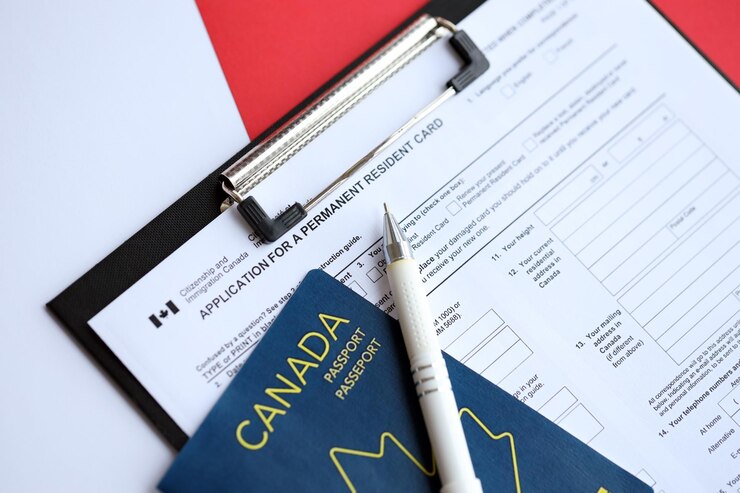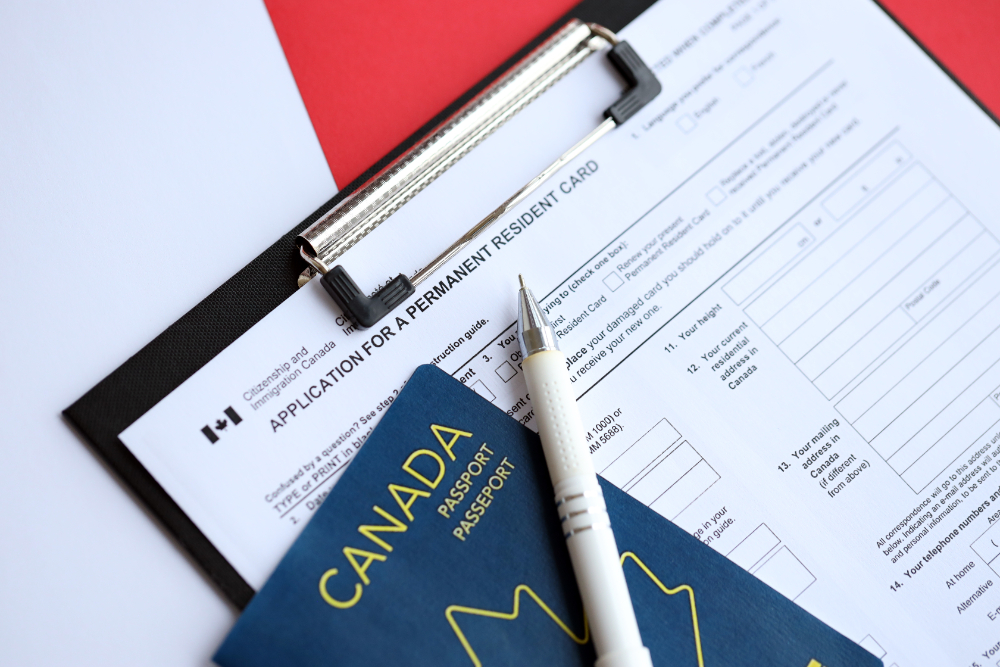
Talk to us?

Obtaining permanent residence in Canada is a significant step for those looking to build a new life in one of the world's most welcoming countries. As a permanent resident, individuals have the right to live, work, and study anywhere in Canada, as well as access to most social benefits that Canadian citizens receive. To become a permanent resident, applicants must go through one of several immigration programs, such as the Express Entry system, which manages applications for skilled workers, or the Provincial Nominee Program (PNP), which allows provinces and territories to nominate individuals based on specific local labor market needs. Permanent residents must meet residency obligations and can eventually apply for Canadian citizenship.
Express Entry is Canada's primary system for managing skilled worker applications for permanent residence. It operates online, using the Comprehensive Ranking System (CRS) to evaluate candidates based on age, education, work experience, and language proficiency. Candidates with the highest CRS scores receive invitations to apply through regular draws. The system includes three main programs.
The FSWP targets skilled workers with at least one year of full-time work experience in NOC TEER 0, 1, 2, or 3. Candidates need CLB 7/NCLC 7 language proficiency, Canadian credentials/ECA, a minimum score of 67/100, and sufficient funds, unless exempted, for permanent residency
The FSTP is for skilled trades workers seeking permanent residency. Applicants need two years of full-time experience in a skilled trade within five years and a job offer or Canadian certificate of qualification. They must meet language requirements (CLB 4/NCLC 4 for reading/ writing, CLB 5/NCLC 5 for speaking/listening) and show sufficient funds unless employed in Canada. Educational credentials or ECA can enhance their profile.
The CEC is for skilled workers with at least one year of Canadian work experience in the last three years. They must meet language requirements (CLB 7/NCLC 7 for TEER 0 or 1, CLB 5/NCLC 5 for TEER 2 or 3). While no specific education is required, Canadian credentials or an ECA can enhance the profile.
Canada values family reunification, allowing citizens and permanent residents to sponsor close relatives for permanent residence through the Family Class program. This includes sponsoring spouses or common-law partners, parents and grandparents, and dependent children. Sponsors must be at least 18, reside in Canada, and demonstrate the financial ability to support their relatives without relying on social assistance, except in cases of disability.
Canadian citizens living abroad can sponsor their spouse, common-law partner, or dependent child if they commit to returning to Canada once the relative obtains permanent residency. Permanent residents living outside Canada cannot sponsor. There is typically no minimum income requirement for sponsoring a spouse or dependent child, but meeting Statistics Canada's Low-income Cut-Off (LICO) may be needed under certain conditions.
Certain circumstances can disqualify individuals from sponsorship, including outstanding immigration loans, unresolved court-ordered support payments, serious criminal convictions, or current incarceration. Sponsored relatives must also meet eligibility and admissibility criteria.
Certain circumstances can disqualify individuals from sponsorship, including outstanding immigration loans, unresolved court-ordered support payments, or past convictions for serious offences. Sponsors facing restrictions such as removal orders or current incarceration may also encounter limitations.
Canada also offers several pilot programs aimed at addressing specific economic and demographic needs. These include the the Rural and Northern Immigration Pilot, and the Agri-Food Immigration Pilot. These programs are designed to attract skilled workers to specific regions or industries facing labor shortages. For instance, the Rural and Northern Immigration Pilot targets smaller communities while the Agri-Food Immigration Pilot addresses labor needs in the agri-food sector. These pilot programs provide unique opportunities for immigrants to obtain permanent residence while contributing to the development of these regions and sectors.

Canadian permanent residence status allows individuals to live, work, and study anywhere in Canada indefinitely. To qualify, you may apply through various immigration programs, such as Express Entry, Provincial Nominee Programs (PNPs), family sponsorship, or refugee resettlement.
Express Entry is Canada's online system for managing applications for permanent residence from skilled workers. Candidates create an online profile, and eligible candidates are ranked based on factors such as age, education, work experience, and language proficiency. The highest-ranked candidates are invited to apply for permanent residence through regular draws from the Express Entry pool.
Provincial Nominee Programs (PNPs) allow Canadian provinces and territories to nominate individuals who wish to immigrate to Canada and settle in a specific province or territory. Each province and territory has its own unique streams and criteria tailored to its labor market and economic needs.
Pilot programs are temporary immigration initiatives designed to test new approaches to immigration before potentially implementing them on a larger scale. These programs often target specific groups or address regional labor market needs, providing opportunities for individuals who may not qualify under existing immigration streams.
Yes, Express Entry includes programs such as the Federal Skilled Worker Program, the Federal Skilled Trades Program, and the Canadian Experience Class, which do not require a job offer to be eligible. However, having a valid job offer from a Canadian employer can increase your chances of receiving an Invitation to Apply (ITA) for permanent residence.
While Canadian work experience can increase your Comprehensive Ranking System (CRS) score in Express Entry, it is not always required. Skilled work experience gained outside of Canada may also be eligible for consideration.
Yes, many PNPs have streams that do not require a job offer. Instead, they may require candidates to have relevant skills, education, work experience, or ties to the province, such as previous study or work experience.
Processing times vary depending on factors such as the program you apply through, the volume of applications received, and the completeness of your application. Generally, it can take several months to process permanent residence applications, but some programs may have faster processing times.